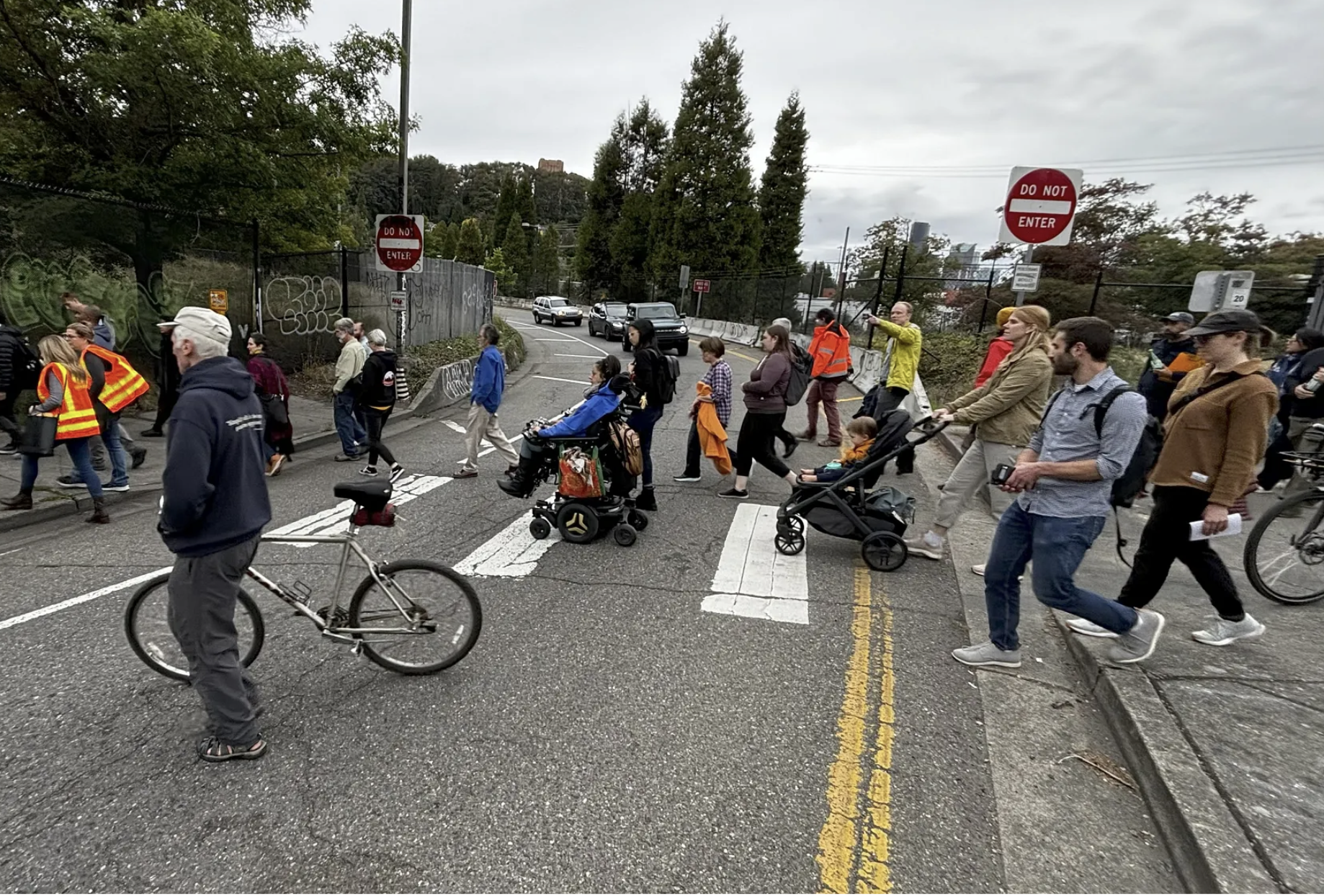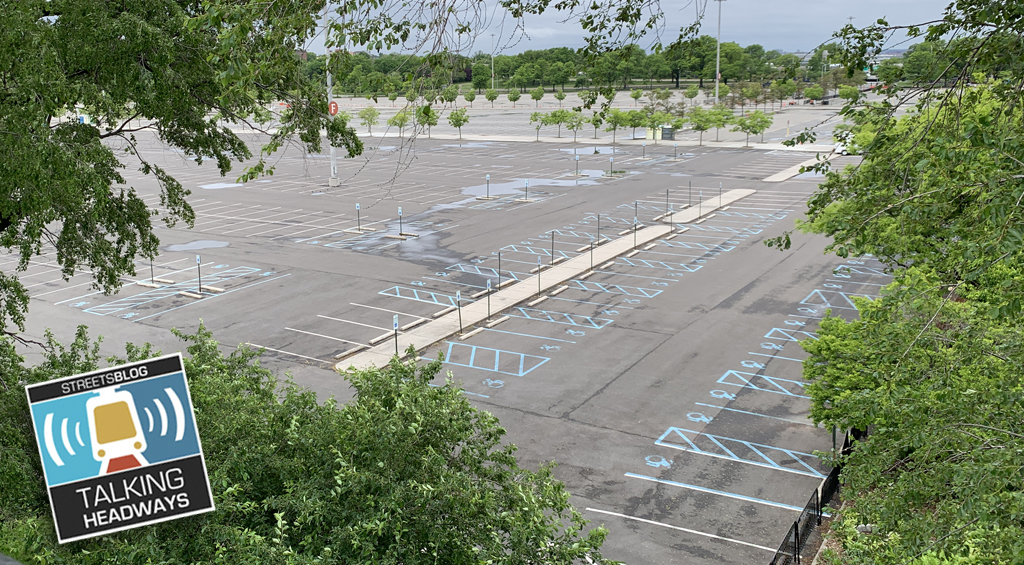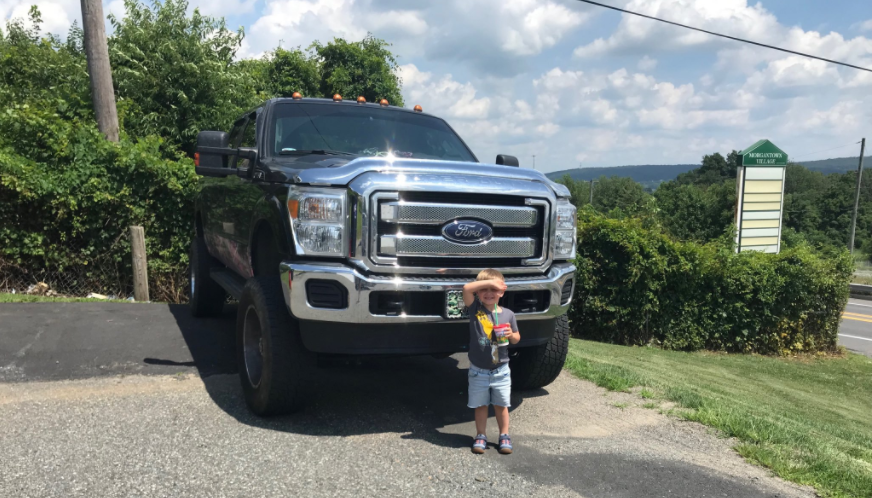This article was originally published in the Vision Zero Cities Journal, released as part of Transportation Alternatives’ 2025 Vision Zero Cities conference, which will take place October 28-30 in New York City.
The first time I met Krystal Monteros, she wore a black mask bedazzled with rhinestones for a press conference on a muddy stretch of exurban highway shoulder. It was February 2021. Krystal, a disabled advocate, had joined our coalition’s fight against Washington state’s business-as-usual investments in highway expansions while failing to meet basic mobility needs like accessible sidewalks.
Over the roar of traffic, Krystal shared her story: forced from her apartment when the landlord stopped taking Section 8, she began a nearly impossible hunt for a place that was affordable, wheelchair accessible, and near transit. She finally found an apartment with a bus stop nearby, but the path to the stop included traversing a 100-yard mud pit. She would often get stuck in her wheelchair just trying to reach the bus.
And it was not just that corner. All over her city, sidewalks ended in gravel, vanished into nothing, or were too broken to use, leaving her stranded again and again. Krystal’s experience is not unique. Ask any disabled nondriver, especially a wheelchair user, about the condition of their communities’ pedestrian infrastructure, and I guarantee you will hear similar horror stories.
Inaccessible sidewalks mean that people walking and rolling end up in the street with vehicles, a contributing factor in pedestrian deaths. Research by the University of Central Florida and the Florida DOT in 2022 reveals that the absence of a sidewalk can increase the risk of a pedestrian crash by 67%.
The immense unmet need for connected accessible networks to roll and walk will take political will and substantial financial investments to address, but it also helps to have a legal framework to ensure that when upgrades occur or new infrastructure is constructed, best practices are used. This is why when the Federal Register finally published an updated version of the Public Right of Way Accessibility Guidelines (PROWAG) in August 2023, advocates were hopeful.
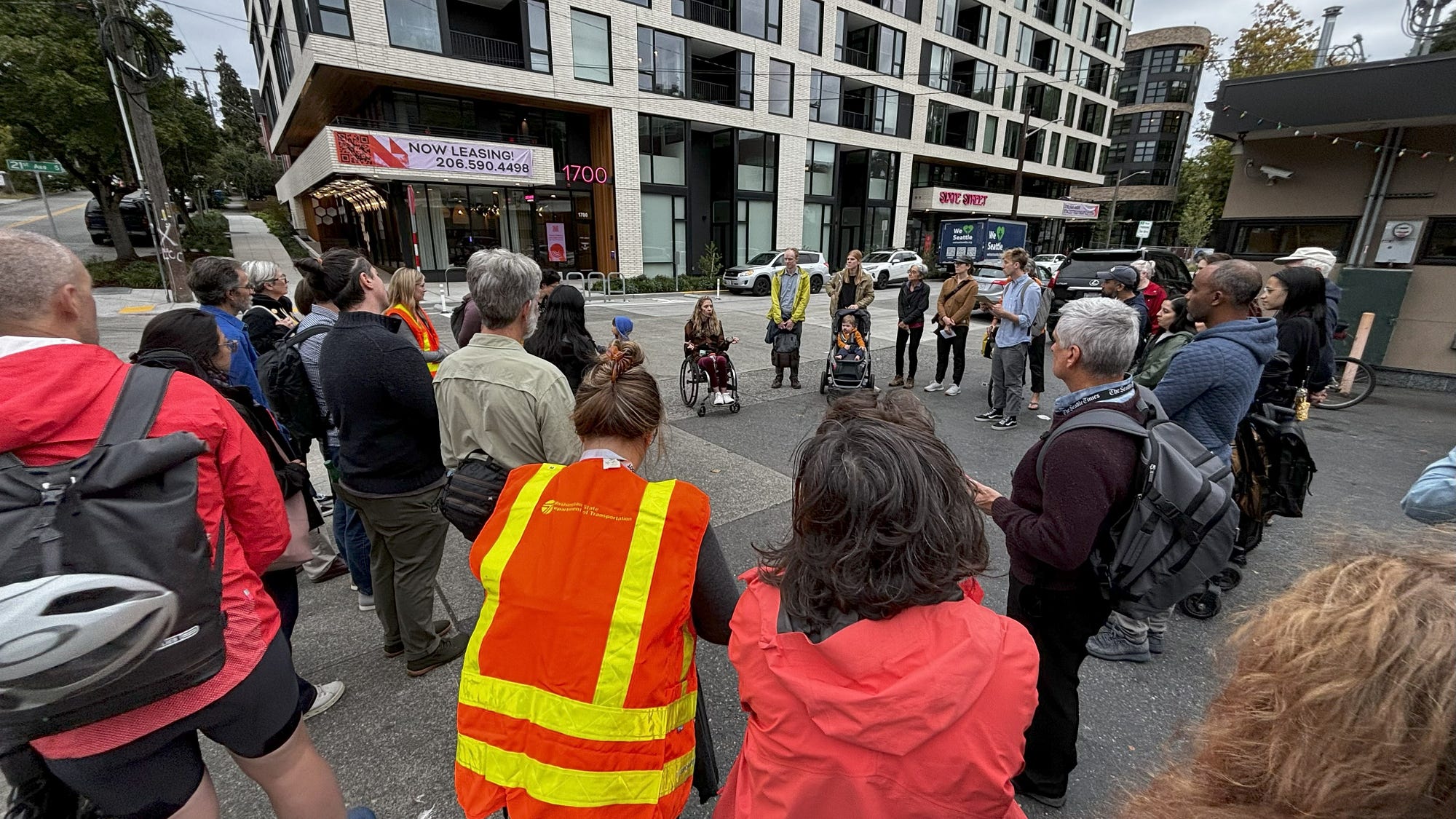
PROWAG is a set of guidelines developed by the US Access Board to address access to sidewalks and streets, crosswalks, curb ramps, pedestrian signals, on-street parking, and other components of public right-of-way. The first PROWAG guidelines were published in 2005, and in 2013, the US Access Board proposed an update. It took another ten years for those proposed updates to be negotiated and finalized, but in August 2023, the updated PROWAG was finally published in the Federal Register.
In January 2025, the US Department of Transportation adopted those changes, meaning that these new standards must be applied to all transit projects in the US. These new requirements include truncated domes along loading platforms, wide and flat enough landing areas for boarding and deboarding passengers, and a “clear” area for mobility devices.
Unfortunately, the Department of Justice has not yet passed PROWAG, which means that new guidelines are unenforceable for non-transit projects. These guidelines include clarifications on where directional curb ramps are required, and what “triggers” them to be built or updated; when and how truncated domes should be used for crossings; crossing design and safety for large roundabout designs; accessible detours during construction projects requirements; and requirements for audible and tactile pedestrian signals when there are signalized crossings. The guidelines also include clarification around scoping and design for accessible parking spots and passenger loading zones.
There are also a lot of accessible design questions that have not yet been included in PROWAG’s design guidance, raising questions for many state and local DOTs across the country dealing with accessible bicycle infrastructure, floating bus stops, and multimodal space. Nor does it provide guidance on the tactile surfaces and directional indicators that many transit agencies and transportation departments are experimenting with, or how “tactile urbanism” projects like curb extensions and flex posts can be used to further accessibility for blind and low-vision pedestrians rather than complicating safe crossing strategies.
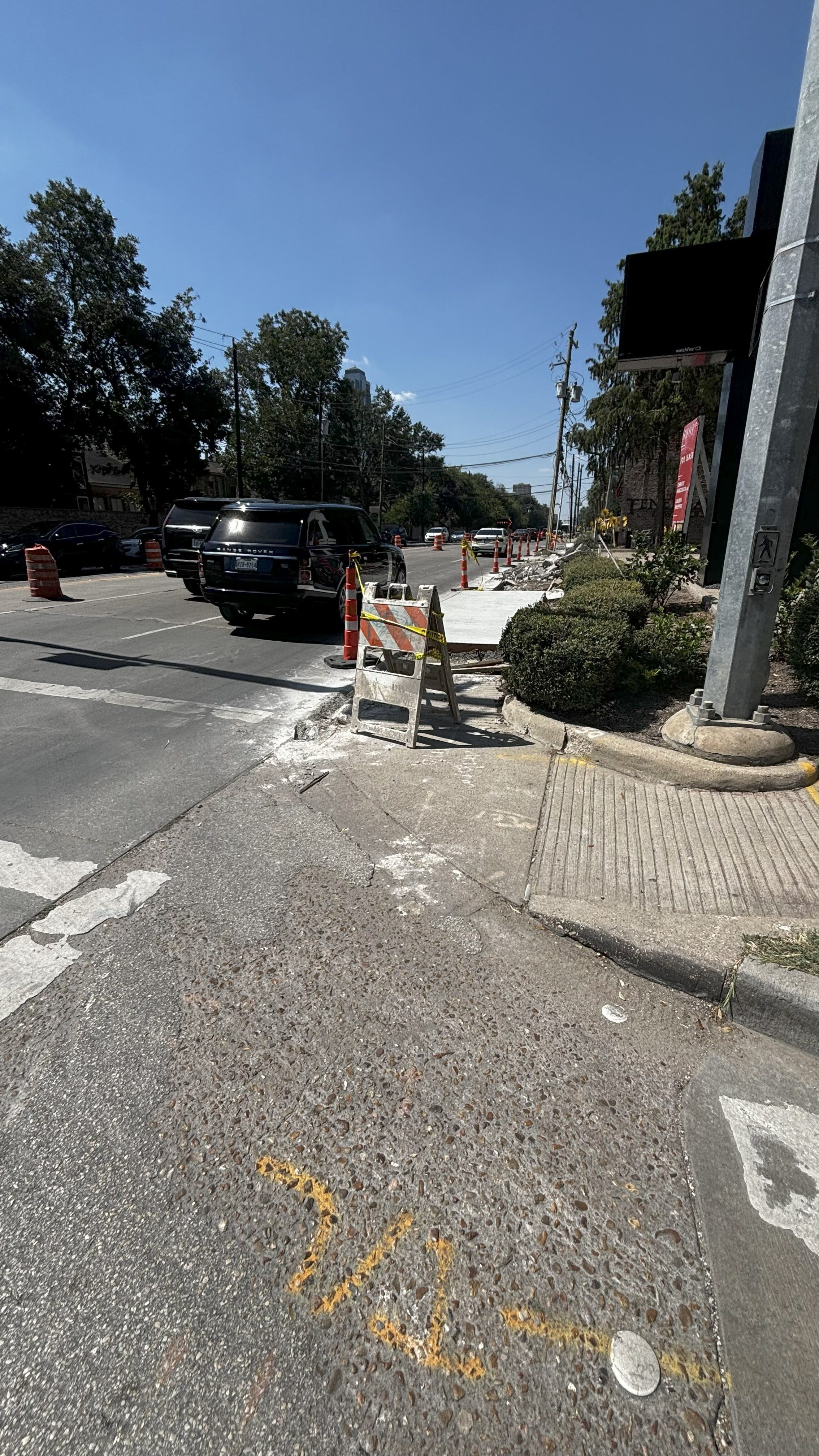
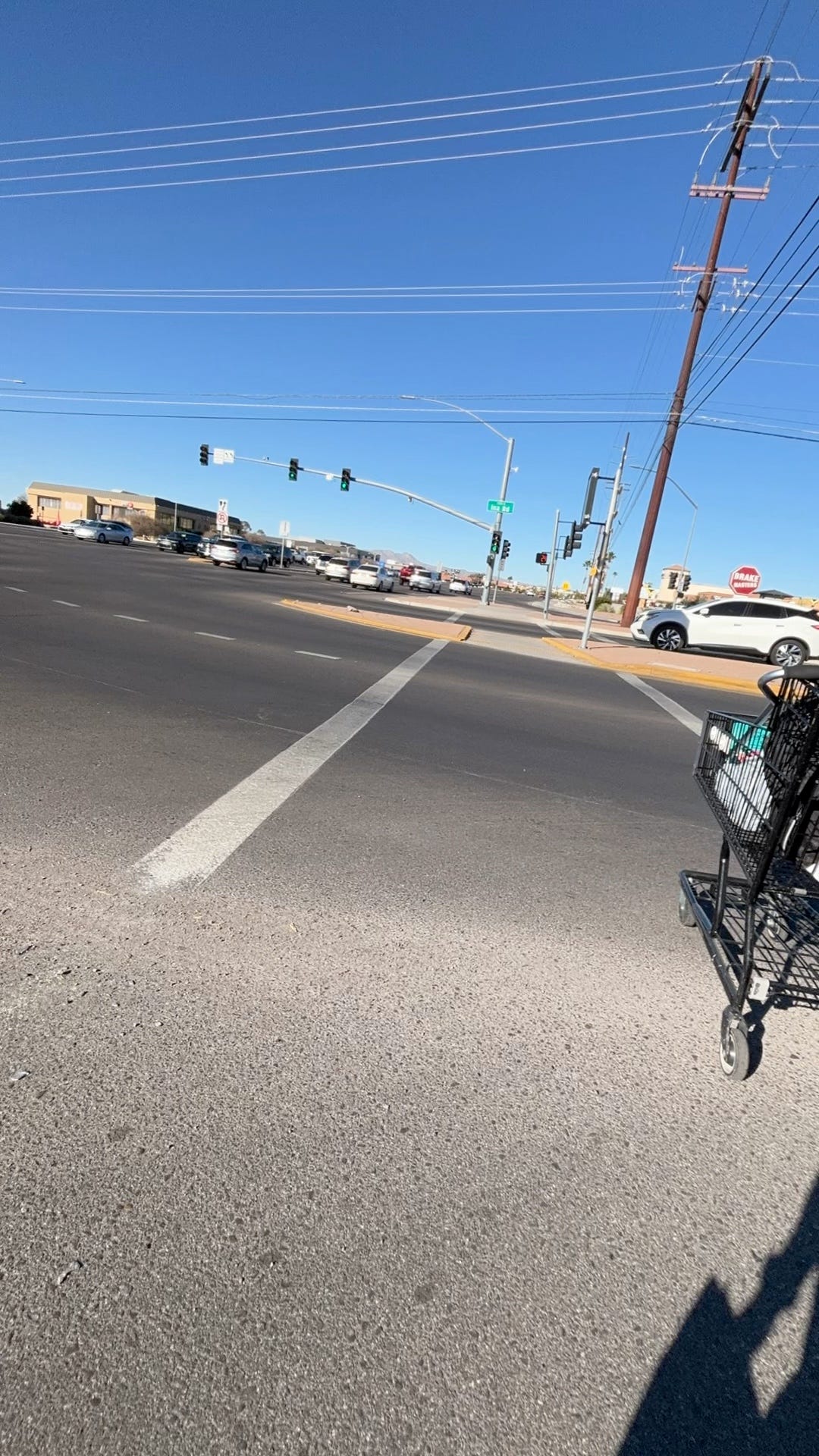
Even if PROWAG is fully implemented, and even if future versions do provide guidance for these more recent design treatments, most of these changes are the equivalent of rearranging the deck chairs on the Titanic. Just because an eight-lane, high-speed road might have sidewalks, curb ramps, and accessible pedestrian signals does not mean that it is a comfortable or safe experience for pedestrians accessing a bus stop along that route.
If we are serious about improving access, we need to normalize walking and rolling. We need to normalize transit use. We need to start building communities that reduce the need to drive long distances — which means rethinking land use and zoning policies that exile affordable housing on the outskirts, in locations with missing sidewalks and nonexistent transit. There is clearly plenty of work to do as we wait a little longer for PROWAG to be fully implemented.
As I was working on this article, I heard my friend Dorian Esper-Taylor had just been hired into a new ADA coordinator role at Pierce Transit, the transit agency that serves Krystal Monteros. Esper-Taylor has both physical and cognitive disabilities and was only recently able to get a driver’s license after spending most of his life reliant on transit and rides.
He also shared that Pierce Transit created this ADA coordinator position in part because they wanted to better understand the agency’s obligations under PROWAG — but it was not just limited to compliance.
“It is really critical they hired me, someone with lived experience,” Esper-Taylor explained. “A lot of the time, ADA coordinators are hired to check a box, but Pierce Transit wants to understand how they can serve our customers better both in the public right of way and in day-to-day interactions. Having someone with lived experience can help the agency understand the difference between compliance and accessibility.”
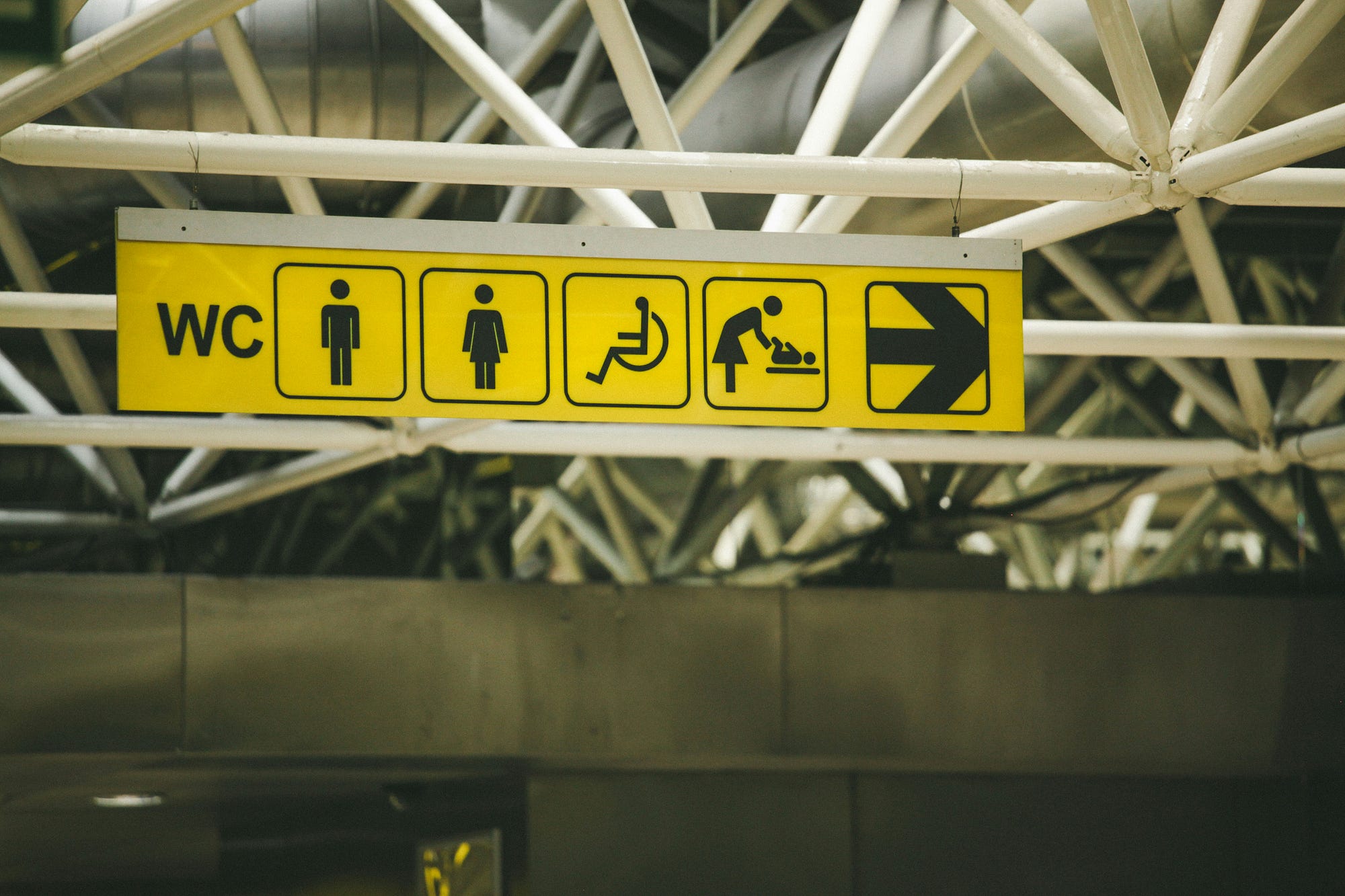
With Esper-Taylor at Pierce Transit, I can confidently say that PROWAG’s adoption by the DOT is creating positive and real impacts. However, as Esper-Taylor points out, when we think of accessibility as limited to guidelines and regulations, we fail to acknowledge the complex and very human needs of people trying to access our communities.
So in many ways, even though we do not yet have a set of comprehensive federally enforceable rules telling us how to make our streets and sidewalks accessible, there is still lots of work to do: local, state and federal transportation departments and transit agencies need to hire disabled staff to ensure that our expertise is built into projects from the initial scoping and budgeting phases, just as Pierce Transit has done. Planning and engineering schools need to teach inclusive design, and also need to recruit and support disabled students who add invaluable lived experience to any project team.
And we need advocates to fight for funding for sidewalk construction and repair, for safer crossings, for slower traffic speeds, and to stop funding highway expansions and road widening projects that only induce more driving and drive (literally) our communities deeper into car dependency.
